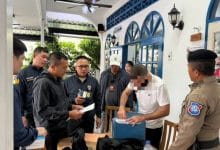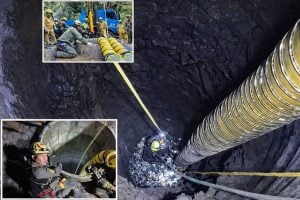What is lead generation and how to do it

Ever been left scratching your head over the term lead generation? Don’t worry, you’re not alone. This fancy business lingo pops up a lot and if it’s got you feeling like you missed a memo, no sweat.
So, what’s a lead? Well, in simple terms, it could be anyone or even an entire company that’s shown some interest in what you’re selling. You need to get their contact info and know what they’re into. But hey, there’s more to lead gen than just that.
This here piece is all about shining a light on the world of lead generation—how it works, smart tactics to use and trends that’ll help you reel in those first leads. Doesn’t matter if you’re a pro or just starting out in this game – our goal is to make things easier for ya. So let’s dive right into this deep-dive.
Exploring lead generation

Diving deeper into the concept, lead generation implies a proactive initiative in attracting potential customers to your service or product. A lead, fundamentally, illustrates an individual or corporation expressing initial interest in what you offer. However, the success of converting a lead into a paying customer lies in the strategic execution of the lead generation process, which can be classified broadly into two types: inbound and outbound.
For instance, inbound leads, also known as warm leads, represent the group who have discovered your business on their own, often generating through your blogs or newsletter subscription. On the other hand, cold or outbound leads typically emerge from your targeted strategy and lead generation tools.
Importance of lead generation
In an era where customers are empowered by easy access to a wealth of information, understanding what they want and who they want it from, lead generation takes precedence. With competition intensifying across industries, your lead generation strategy serves as the key to reach potential customers before they formulate their buying decisions-helping your business grow.
Data reveals the significance with 32% of marketers heading lead generation and contributing to 65% of it. Thus, by using effective lead generation strategies you can make remarkable strides in business growth.
However, things don’t stop at generating a lead. What follows is tactfully converting these leads into active customers. Equipping you with this capability serves as the primary aim of lead generation. This facet of marketing thus becomes a crucial success factor: keeping your objectives clear, facilitating targeted outreach, and ultimately optimising the likelihood of turning leads into paying customers. The better your lead generation practices, the higher your customer conversion rates could be!
So, brace yourself as we delve deeper in our subsequent sections about how to implement lead generation optimally, aligning with robust best practices. Remember that understanding and harnessing the potential of lead generation is a remarkably powerful tool in your arsenal to sustain in this competitive market and also outshine with flying colours.
Types of leads
Centring your marketing strategies around specific types of leads fosters growth and success. For your strategies to reap anticipated results, it’s crucial to discern among four types of leads you may encounter—Marketing-Qualified, Sales-Qualified, Service-Qualified, and Product-Qualified Leads.
Marketing-Qualified Leads

Marketing-Qualified Leads, prominently known as MQLs, begin as passive liaisons likely to progress into customers upon establishing a relationship. These prospects demonstrate interest in your offerings and engage via orchestrated pathways. For instance, responding to a call to action—like subscribing to a newsletter, downloading exclusive content, or frequent visits to your online assets—can categorize a prospect as an MQL. Here’s an example: If visitors to your website consistently download your free eBook, they’re signaling interest in your content, categorizing them as MQLs.
Sales-Qualified leads
Sales-Qualified Leads (SQLs) form the cohort of active leads. These leads register an active interest in your product or service, typically by selecting to reach out via their preferred channel. Not only do they engage directly, but they also express intent, flagging them your sales team’s top priority. To differentiate, let’s consider all those leads who, after viewing your webinar on lead generation, requested a personalized demo—these direct expressions of interest qualify them as SQLs.
Service and product-qualified leads
Services-Qualified Leads have already used your service and expressed a willingness to upgrade, making them ready for transfer to your sales team. Moving on to Product-Qualified Leads, they’ve experienced your product, often initially through a free trial, and registered an interest in upgrading. Leads volunteering for an upgrade after a compelling free trial echo their validation of your product.
Categorizing and understanding the different types of leads forms the initial steps in capturing and converting them. Deciphering their behavior and interest are essential for your sales and marketing teams to prioritize and accelerate them through your sales funnel, ultimately guiding them through the purchasing journey.
Process of lead generation
Understanding the process of ‘what is lead generation and how to do it’ can be paramount in building an effective marketing strategy. The process primarily encompasses three steps – identifying the target audience, creating and circulating compelling content, and qualifying or scoring the leads.
Research and identify the target audience
The first step in a fruitful lead generation journey involves identifying your target audience. A deep dive into your market can unveil potential customers’ demographics, behaviour patterns, motivations, or challenges. It can help in aligning your product or service with their demands. Keep an eye on important metrics like age, location, job designation, buying habits, or preferences for a well-targeted audience-driven strategy. Leveraging this data can give you a sharper focus on where to allocate marketing resources.
Creating and distributing compelling content
As the parable goes, ‘content is king’. Developing content that appeals to your target audience is crucial. Create educative, persuasive and captivating content that communicates the benefits of your product or services effectively. Blogs, social media posts, videos, webinars, or eBooks – your content can take multiple shapes. Ensure it’s tailored to fit your audience’s requirements and distributed on platforms they frequent. A content strategy engaging in providing solutions to their challenges capturing their interest, hence generating leads.
Qualifying and scoring leads
Lead qualification and scoring, an important step, should not be overlooked. All leads aren’t created equal. They need to be vetted and scored based on their interaction with your content. Leads displaying interest in your content, frequently visiting your site, or filling out forms can be scored highly as opposed to others. Sales and marketing teams use these scores to prioritize leads. They engage more with high scoring leads which have a higher probability of converting into customers, ensuring efficient use of resources. Use this intel to tweak your outreach strategy or content to improve lead scoring.
Strategies for effective lead generation
In the bustling digital marketplace, staying ahead requires diligent crafting of your lead generation strategy. Here’s a look at how you can effectively augment lead generation.
Content marketing for lead capture

Exploding onto the scene is Content Marketing – a powerful tool to allure potential customers and navigate them through the lead generation process. It’s here your target audience finds value in the content offered, which prompts them towards sharing their (Lead) contact information. For Instance, creating relevant blogs, offering insights through webinars, or sharing informative eBooks, can work as catalysts to capture leads effectively. Be mindful though; your content must resonate with potential customers, making a strong case for sharing their contact details.
Utilising social media platforms
Another goldmine for lead generation, Social Media Platforms – Facebook, LinkedIn, Instagram and others, exude immense potential. These platforms act as a two-fold asset; first, they enable content sharing to a broader audience and second, they offer tailored Paid Advertising options for more precise targeting. For instance, sponsored posts on Instagram or Facebook can reach audiences beyond your following, while LinkedIn’s premium features can connect you with industry professionals.
Optimising website conversion paths
Lastly, consider Optimising Website Conversion Paths, vital to ensure all the effort funnelled into generating traffic reaps benefits. Your conversion path, starting from a visitor clicking a Call-To-Action (CTA), followed by landing on a formatted webpage, and eventually providing their contact information, must be seamless. Incorporating lead capture form builders on your web landing pages or embedding retargeting actions brings a significant increase in leads that you can convert.
Having thoroughly navigated the complexities of lead generation, you are now well-prepared to attract, convert, and foster potential customers. It is important to note that effective lead generation hinges not merely on quantity but on quality. Always keep your target demographic at the forefront of your mind, create engaging content, and ensure your website is primed for conversions. Utilise the capabilities of social media platforms and targeted advertising strategies. Employ sophisticated tools such as lead magnets, landing pages, and CRM systems to enhance your productivity. By implementing these measures, you will not only secure a larger number of leads but also optimise your return on investment. Now equipped with this knowledge-base, it is time to apply these learnings and observe the growth trajectory of your enterprise.
Want to no more, Generation gap Making work better for everyone. In the fast-paced modern workplace, bridging the generation gap is becoming a critical challenge for organisations globally. This divide, which extends from experienced Baby Boomers through energetic Millennials to the rising Generation Z, introduces a diverse blend of viewpoints, backgrounds, and anticipations into the professional sphere.
Latest Thailand News
Follow The Thaiger on Google News:


























